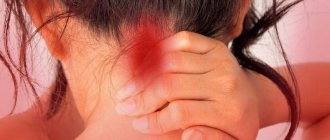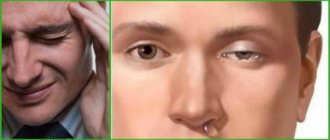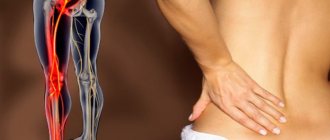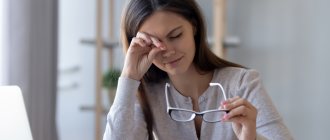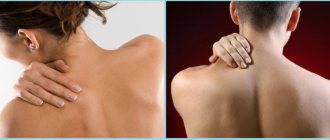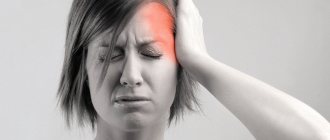Many people are familiar with the sharp pain that hits the left temple. This trouble can be a manifestation of a large number of different diseases, since a significant number of muscles, veins, nerve endings and receptors are located in the temporal region.
It happens that throbbing pain is the only symptom that worries a person. But sometimes other ailments are added to this problem. In any case, such symptoms cannot be ignored, since they may be signs of serious disorders in the body.
Mechanism of occurrence
Painful sensations occur due to irritation of the nerve trunks. First, a pathological impulse is formed in the nerve fibers, as a rule, this occurs due to some provoking factor, mechanical damage or inflammatory process affecting nerve processes or muscle tissue.
As a result, the pathological process affects the structure of neurons, and the nerve fibers cease to perform the function of “inhibition”.
As a result, a short-term pain impulse is formed that spreads throughout the entire nerve trunk. This is how a sharp pain arises, which is often accompanied by pulsation.
It is important to realize that pain in the temporal region of the head is not an independent disease, it is a concomitant symptom indicating some kind of disorder in the body.
Why it shoots in the left temple: 18 common reasons
If the left temple hurts and throbs, this may be a concomitant sign of a number of disorders. As a rule, trouble occurs under the following conditions:
- Physical and emotional fatigue . People who are stressed and lead an unhealthy lifestyle often experience headaches, and their face may go numb during an attack. As a rule, the painful condition lasts for 1–2 hours, after which improvement occurs.
. A situation where a headache and shooting in the left temple often occurs in adolescents and young women, especially during pregnancy. Often the malaise is accompanied by visual disturbances, and “spots” flash before the eyes, and some patients experience nausea, vomiting and an increased heart rate.
Migraine- Premenstrual syndrome . During these periods, neuroendocrine changes occur in a woman’s body, one of the manifestations of which is pain in a certain part of the head.
- Disruptions in the production of hormones . This process can manifest itself as sharp pain in the back of the head, temples or frontal area. Often such attacks occur in women during menopause, accompanied by hot flashes and mood swings.
- Inflammatory processes and infectious diseases . With influenza and ARVI, severe pain in the head often occurs, disappearing after recovery. These same symptoms are characteristic of colds, when the patient could simply be exposed to a draft. In such cases, pain may appear not only in the temples, but also in the neck or ear.
- Poisoning . During intoxication, in addition to nausea and vomiting, an unpleasant sensation often occurs when the right or left temple throbs and severely hurts. The same symptoms are characteristic of a hangover.
- Atherosclerotic plaques in the vessels of the brain . Such “deposits” are often the cause of pain that knocks in the left temple , and can periodically intensify and then subside. Such conditions are accompanied by disorders of hearing, vision, memory and coordination of movements.
- High or low blood pressure . These conditions may be accompanied by loss of consciousness, weakness, arrhythmia and pulsation in the right or left side of the head.
- Diseases of the adrenal glands . This condition is characterized by increased activity of adrenaline synthesis, resulting in vascular spasms and blood pressure “jumping up.” This provokes the disease.
- Vegetovascular dystonia . This disorder can be accompanied by unpleasant manifestations from all organs and systems of the body, including headaches.
- Osteochondrosis of the cervical spine . Due to this disorder, the diameter of the vertebral artery decreases, which can cause discomfort when the head hurts and the left temple twitches.
- Diseases and injuries of the facial joints . With such a disorder, pain appears in the corresponding part of the head, as well as in the cheekbones. Sometimes when the jaw moves, clicks occur and a crunching sound is heard in the joints.
- Damage to cranial nerves . This condition is caused by compression of the processes, which provokes sensations reminiscent of an electric shock.
- Chronic inflammation of the temporal arteries (arteritis) . This disease affects older people: both women and men. The condition is manifested by pain in the temple area, which is often pulsating in nature. In some cases, there is redness in this part of the face.
- Infectious and inflammatory diseases of the oral cavity . Many patients note that when a tooth hurts, the unpleasant sensation spreads throughout the entire head, including the temporal region. The same thing happens with painful processes in the mucous membrane, for example, stomatitis.
- Inflammation of the meninges . These conditions are characterized not only by headache and fever, but also by symptoms accompanying poisoning.
- "Hungry" pains . People who eat irregularly or practice strict diets are prone to frequent ailments in the form of headaches. This is a consequence of a lack of certain microelements in the body.
- Food headaches. This is the opposite situation, when the disease occurs in people who abuse certain foods, for example, fast food, chocolate, Chinese processed foods, cheeses, and others.
Other causes of pain
If a person has a headache, including the area of the eyes and temples, this is not yet evidence of illness. Perhaps this illness is associated with other, “harmless” reasons. Here are some of them:
Failure to follow healthy eating rules
When a person does not take care of his health, he eats a large number of foods with harmful food additives. One of the most harmful food additives is monosodium glutamate.
This is a specific substance that provokes pain in the body in different parts of the body, including the head.
Monosodium glutamate is found in processed meat products, as well as semi-finished products.
Also, the occurrence of headache discomfort may be associated with eating foods that contain nitrites.
Discomfort resulting from eating unhealthy foods is often localized in the eye and ear areas.
Psychogenic factors
Depression, nervousness, psycho-emotional stress, stress - all this provokes the appearance of uncomfortable sensations in the human body.
It’s not for nothing that people say that all diseases are caused by nerves. With an illness caused by stress, a person feels powerful pressure on the skull. There is also pulsation in the temporal zone.
Abrupt change in climatic conditions
The human body adapts to the external climate even in the womb. Many people are hypersensitive even to changes in weather.
Such changes lead not only to headache discomfort, radiating to the eye or temporal region. A person may experience nausea and even vomiting.
In what cases should you not postpone a visit to the doctor?
The patient requires urgent medical attention if headaches are accompanied by the following symptoms:
- vomiting and nausea;
- visual impairment;
- loss of consciousness;
- difficulties in pronouncing words and recognizing someone else's speech;
- increased body temperature;
- numbness or weakness on one side of the body;
- tension in the neck muscles.
Symptoms such as these may be signs of serious illnesses such as meningitis, encephalitis, or stroke. In this case, you cannot delay contacting a doctor, and you should immediately call an ambulance.
Diagnostics
Since there are many reasons that provoke a headache in the left temple, a comprehensive examination is required to identify them. As part of diagnostic measures, the following are prescribed:
- general and biochemical blood test;
- electroencephalography of blood vessels in the brain and cervical region;
- Magnetic resonance imaging;
- lipid profile;
- consultation of specialized specialists (ophthalmologist, neurosurgeon, psychiatrist, neurologist and others).
After a diagnostic study, the doctor prescribes appropriate treatment.
Treatment methods for pain in the left temple
Treatment methods for pain in the left temple of the head depend on the disease that caused the pain and its symptoms. In any case, the method should be selected by the doctor, based on the results of tests and diagnostic procedures. Treatment may include:
- taking medications – allows you to eliminate pain, suppress inflammatory processes and the development of infection, and get rid of the symptoms of the disease;
- physiotherapy - influencing the site of pain or inflammation using physical factors. Used as an additional or auxiliary method;
- massage - the use of biologically active points on the human body to eliminate pain;
- traditional medicine - treatment using decoctions, ointments, oils, infusions and teas prepared with the help of plants and other natural resources. When used correctly, this method can bring good results and relieve not only pain, but also the disease itself;
- surgical interventions (operations) - used in cases where the disease cannot be eliminated only with the help of medications and other methods.
Self-medication is extremely dangerous. In the presence of tumors, methods such as massage and traditional medicine treatment can help to increase it. And improper medication use can make the disease chronic.
Features of therapy
Depending on what disease is causing the pain in the left side of the head, a specialist will prescribe treatment. The following medications can be used as part of therapy:
- sorbents;
- anti-inflammatory drugs;
- drugs that relieve swelling of blood vessels;
- antipyretic substances;
- antibacterial medications;
- sedatives.
Warming ointments can also be prescribed if the pain appears as a result of prolonged exposure to a draft. In addition, physiotherapeutic procedures are carried out, including:
- mud wraps;
- baths;
- massages;
- magnetic therapy;
- electrophoresis;
- acupuncture.
In cases where the headache is caused by overwork, overeating or a strict diet, it is important to change your lifestyle and diet to eliminate the causes of the malaise.
Preventing headaches: 7 simple rules for staying healthy
As you know, it is easier to prevent any problem than to waste time and effort on solving it. To avoid the appearance of shooting pains in the temple and other unpleasant symptoms that accompany them, it is important to follow the following preventive measures:
- Sleep at least 8 hours a day and adhere to a work-rest schedule to avoid overwork.
- Be outdoors more often.
- Do gymnastics regularly to strengthen your muscles and avoid spinal curvature.
- Eat right and do not abuse fatty, smoked, spicy foods and sweets.
- To refuse from bad habits.
- Use caution when taking medications.
- Treat emerging diseases in a timely manner.
First aid for severe pain
In many cases, headaches can be controlled with regular pain medications. But this is only if the pain arose for non-hazardous reasons. If it is caused by any disease and painkillers do not help, then you should definitely contact a qualified specialist as soon as possible.
Taking non-steroidal drugs can help get rid of cephalgia. They have analgesic, anti-inflammatory and antipyretic effects. It is advisable to take them immediately after a headache occurs.
Many people take medications from the analgesic group to relieve pain. But here you need to be careful. They can be addictive if taken for a long time. Therefore, they should be used only after consulting a doctor and following the method of administration recommended by him.
Helpful information
In some cases, massage techniques help get rid of cephalgia. But for it to be effective, you need to know the special points that need to be influenced. If you do massage correctly, it will effectively help get rid of headaches in a short time.
After such a procedure, you definitely need to lie down and rest, or better yet, get some sleep.
Sometimes you just need to relieve stress and relax. The best remedy for this is a warm bath. You can take it with essential oils that help relieve headaches.
A daily contrast shower strengthens the walls of blood vessels and trains them. This will avoid not only cephalgia, but also many other diseases associated with blood vessels. In addition, it strengthens the body.
If the cause of pain in the temples is nervous disorders and stress, then relaxation methods such as meditation, aromatherapy, and auto-training will help.
Proper nutrition, walks in the fresh air, good healthy sleep and getting rid of bad habits will help you forget about such ailments as headaches.


